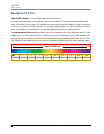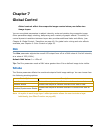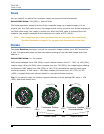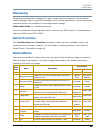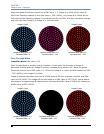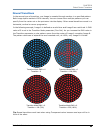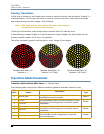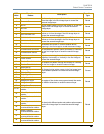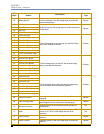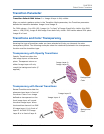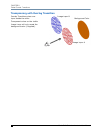
StudioPix™ Pixelation Luminaire User Manual 49
Chapter 8
Global Control: Transitions
The Transition Mode and Transition parameters provide over 70 patterns
for switching between image layers and interact with the Color
Transparency parameter to create a wide range of looks.
SHOWPIX and StudioPix fixtures operate in a similar manner to media server based digital lights
such as DL.3 and Axon, but inherently it has a very unique graphic's engine. The graphics
engine in SHOWPIX and StudioPix is based on a “Composite Mixer” concept for control of the
two image layers. The composite mixer uses the Transition Mode and Transition parameters
to create real time crossfades, wipes, and transitions from one layer to another.
Transition Types
To understand how transitions function, think of the two images as separate layers that move
together to mix colors and then replace each other. Depending on the transition, the
relationship between the layers will operate differently.
Note: The type of transition assigned will also determine how the Color
Transparency will be interpreted, (see
Transitions and Color Transparency
on page 55).
There are three basic types of transition options:
• Opacity transitions vary the intensity of Image A and Image B.
• Reveal transitions open a pattern in one Image layer that reveals the other.
• Overlay transitions cover, uncover or push one Image layer with the other.
Two special case Transition Mode options are also available:
•The Random Transition option cycles through all the transition options except for itself
and the Snap option.
•The Snap option switches from one Image layer to the other at a DMX value of 127 (50%)
(both Image files are at full intensity).
Opacity Transitions
Normal Fade
Transition Mode DMX value = 0
A normal fade transition option is the default at a DMX value of 0. In this case, Image layers A
and B are arranged on the same plane and the intensity of each is varied to create a fade effect.






